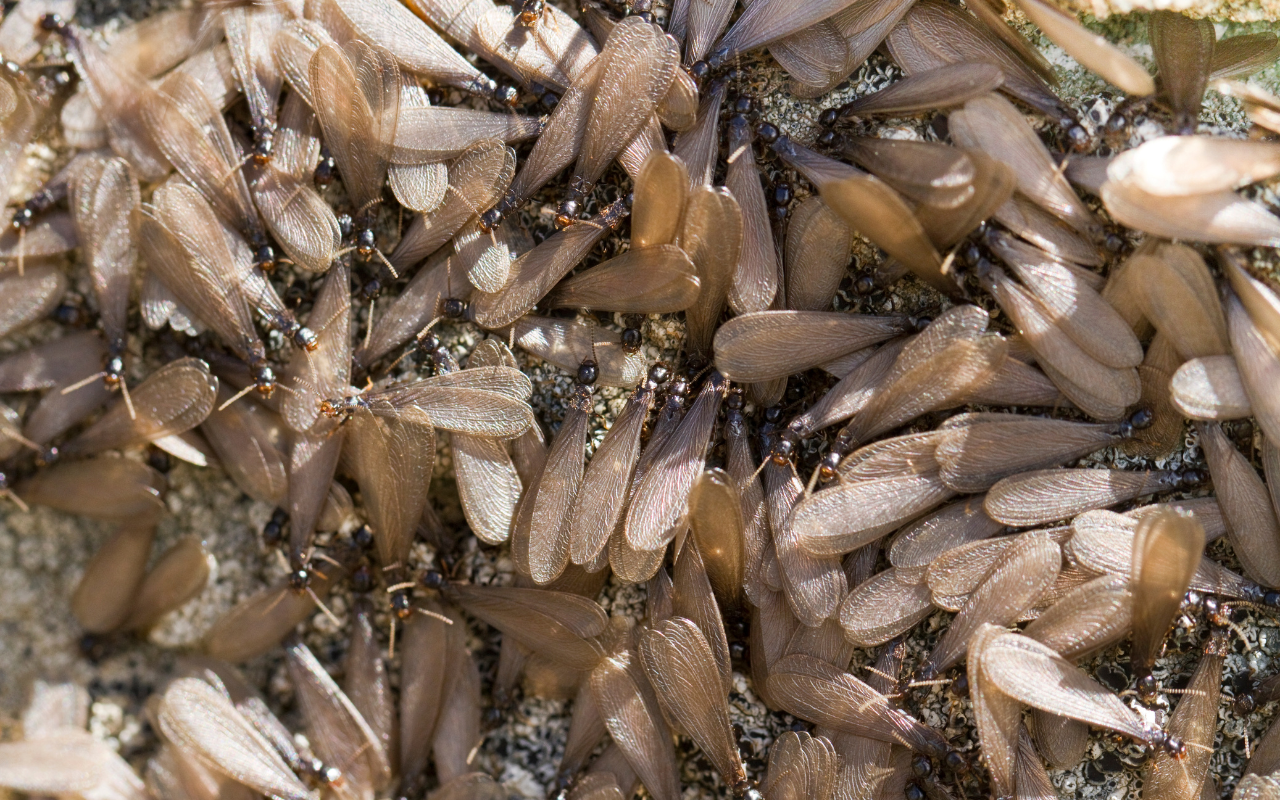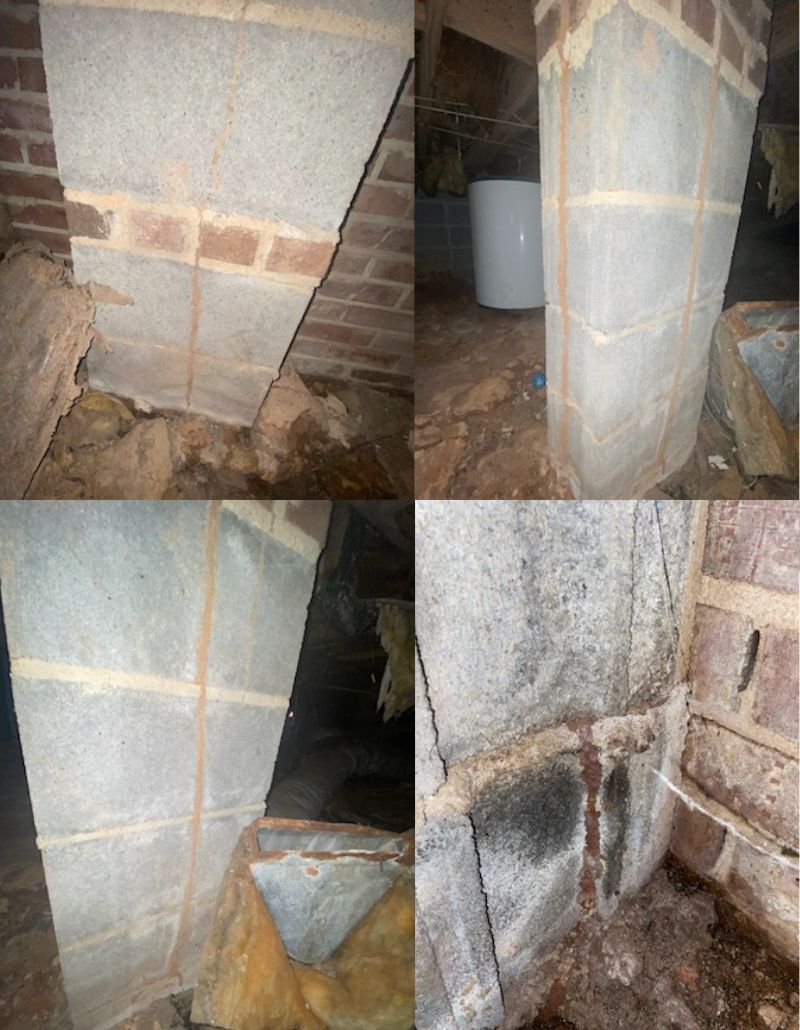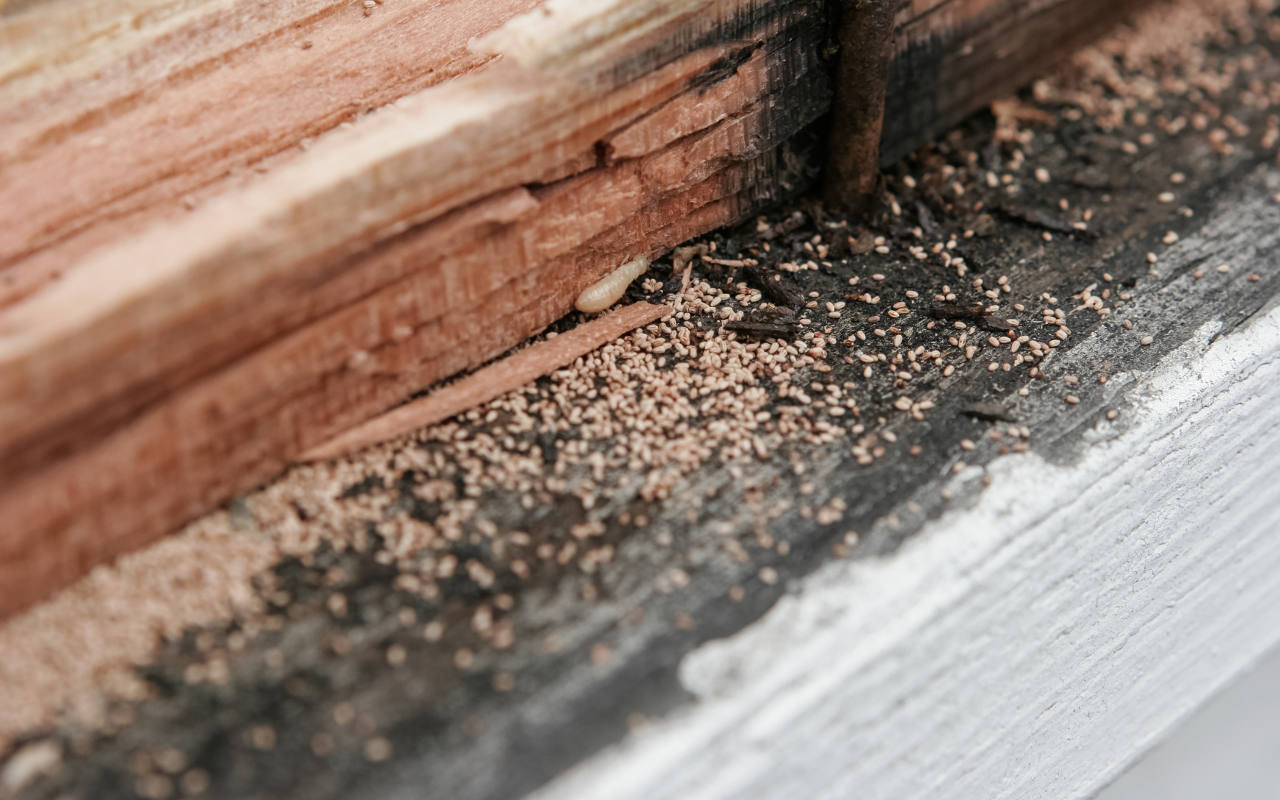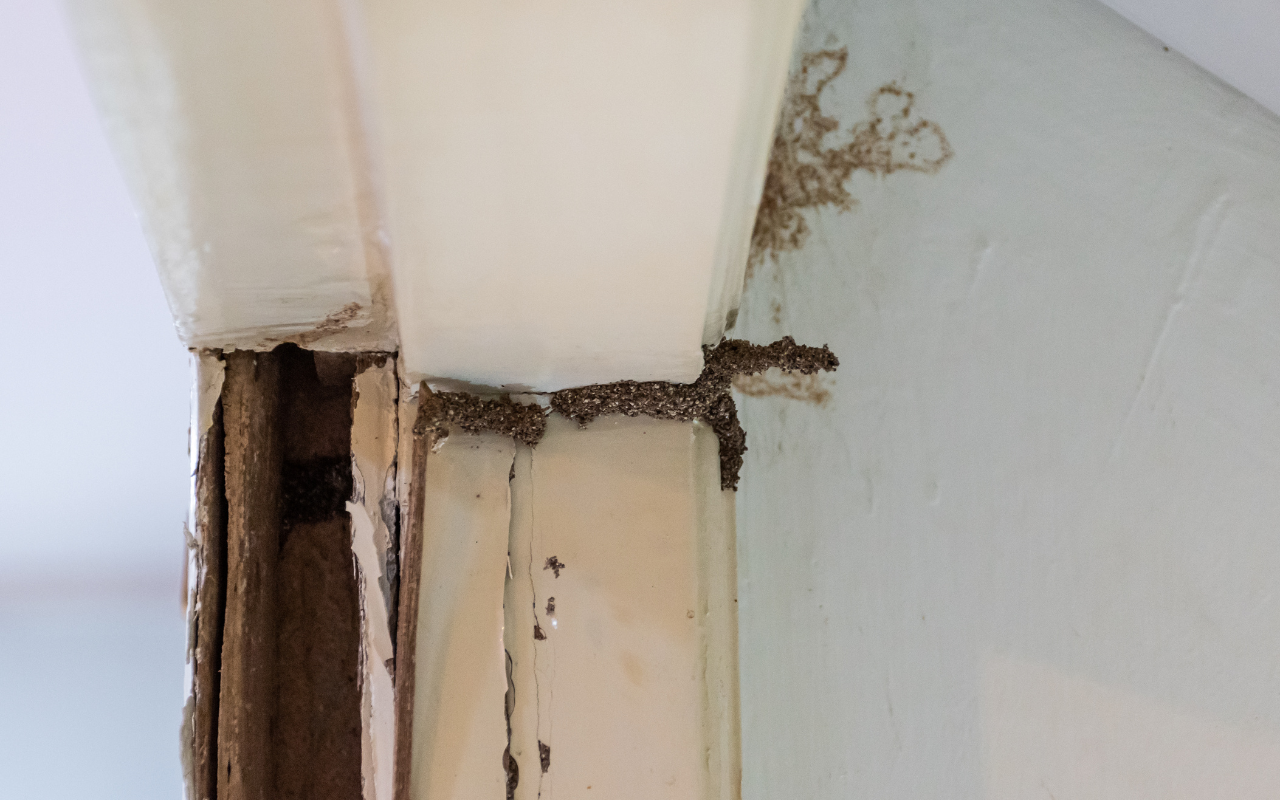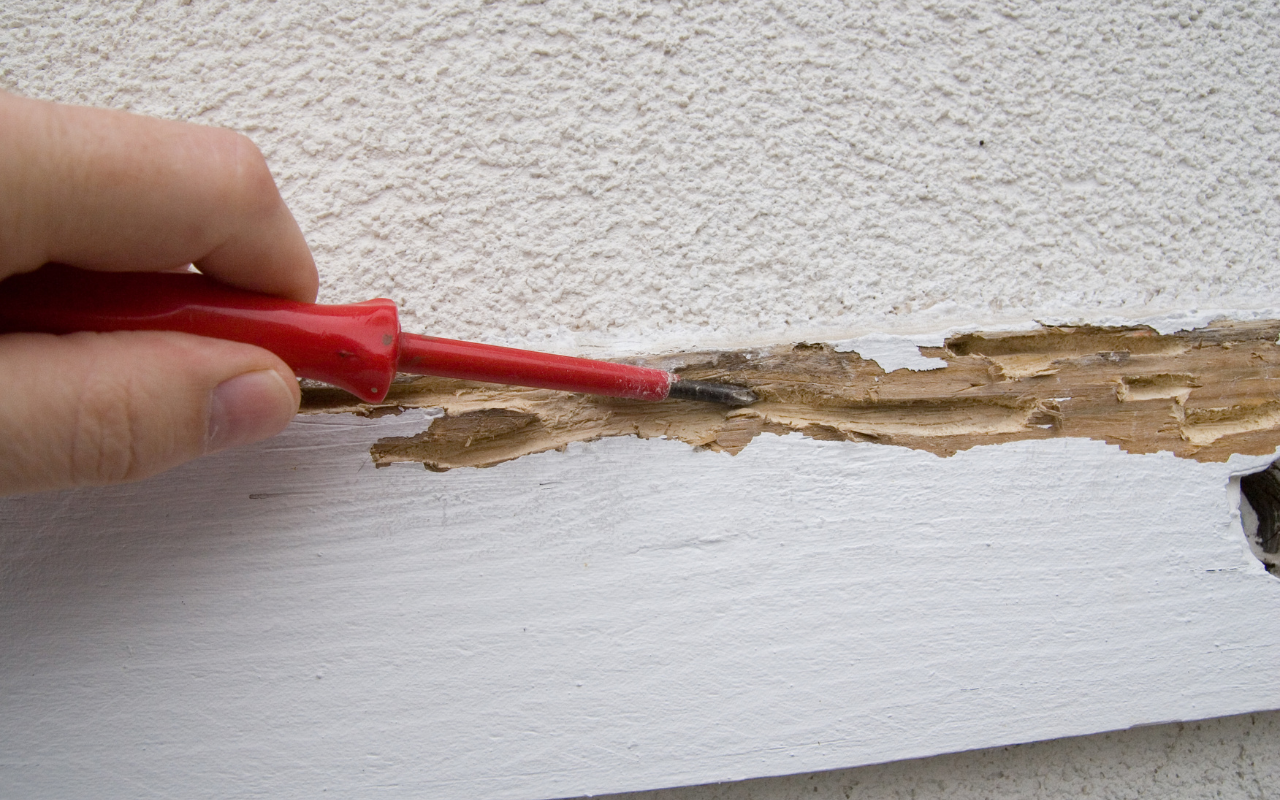Recognizing the Signs of a Termite Infestation
Every year termite colonies are responsible for causing billions of dollars in damage to structures in the United States! A large part of this cost comes from the fact that many signs of termite damage are easily overlooked – and the problem is only detected once it has gotten serious!
This article will look at the nine most common signs of a termite infestation, ranging from some early warning signs of termites to some symptoms which may indicate a serious infestation!
If you spot any of these signs, it is time to contact your local exterminator and request a termite treatment!
9 Signs of a Termite Infestation
Swarmers
Swarmers, also known as alates, are the reproductive termites that leave their colonies to start new nests. Unlike the workers that eat your wood, these flying termites have wings and are often mistaken for flying ants.
Seeing termite swarmers inside your home often indicates an existing termite problem. On the other hand, finding them outside near light sources after a rain might simply mean they are passing through. If you’re unsure about the insects you’re seeing, capture a few in a container for a professional pest control expert to examine.
Discarded Wings
After swarmers return from their nuptial flight, they shed their wings. Finding piles of tiny wings inside your home, especially around window sills and doors, is like finding a receipt from termites stating they’ve moved in and are in the process of starting a new colony!
Mud Tubes
Mud tubes are one of the most definitive signs of a termite infestation. These structures are about the width of a pencil and can be found where the ground meets your house or any other potential cellulose-rich food source like a tree or shed.
The tunnels act as protection for termites, shielding them from open air and predators and retaining the moisture which they need to survive. Subterranean termites, the most common and destructive type, build these tubes, which are composed of tiny pieces of soil, wood, and debris, combined with the termites’ saliva and feces.
Here’s what to look out for when identifying mud tubes:
- Location: Mud tubes can usually be found on the exterior of your home, or interior walls in basements or crawl spaces leading up from the ground.
- Appearance: These tubes are often earth-colored, blending with the soil or the wood they are attached to, and may be difficult to spot. They can be dry and crumbly if old or moist and dark if currently in use.
- Break Test: To determine if an infestation is active, break a piece of the tube off and check back in a few days. An active colony will repair the breach, indicating live termites are present.
If you spot these structures, do not disturb them beyond a simple test. It is essential to contact a professional who can assess the extent of the infestation and recommend a course of treatment. Regular inspections of the foundation of your home, basement, and crawl spaces can help you spot these tubes early before the termites can cause much damage.
Damaged Wood
Wood damage is a classic sign of a termite infestation. Termites consume wood from the inside out, so the surface may appear normal while the inside is hollowed out. Tapping on wood that sounds hollow can reveal a termite’s hidden banquet hall.
Termite Droppings (Frass)
Termite droppings, known as frass, are a clear indicator of a drywood termite infestation. Unlike subterranean termites that use their droppings to build mud tunnels, drywood termites push their frass out of small exit holes built into the side of their colonies, creating small mounds or scattered piles that are a sign of an active infestation.
Here are some tips to identify frass:
- Appearance: Termite frass resembles tiny, rigid, wood-colored pellets, similar to sawdust or fine grains of sand. Each pellet is approximately 1 mm in length and oval-shaped.
- Color: The color of frass can vary, typically reflecting the color of the wood that the termites are consuming. Therefore, it might range from light beige to dark brown.
- Location: You may find frass in piles on surfaces like windowsills, baseboards, or in and around wooden structures. Drywood termites like to keep their living areas clean, so these small mounds are a telltale sign they’re nearby.
Bubbling Paint
Bubbling or peeling paint on walls can sometimes be mistaken as a mere cosmetic issue or a sign of water damage. However, it can also be a symptom of termite damage!
Termites are moisture loving creatures and their tunnels contain a significant amount of humidity. This elevated humidity can cause the paint to lose adhesion, leading to bubbling or blistering on the painted surface.
If you find bubbling or peeling paint, especially in conjunction with other signs of termite activity, investigate further or have a professional examine the area. Gently probing the area near damaged paint with a screwdriver can reveal the hollowed-out wood of termite galleries.
Quiet Clicking Noises
If you hear a quiet clicking sound coming from the walls, it’s not your imagination—it could be termites. Worker termites are noisy eaters, and the sound of them munching through wood can sometimes be heard if you listen carefully!
Tight-Fitting Doors and Windows
Since termites produce a significant amount of moisture when eating and tunneling through door and window frames, it isn’t uncommon for the infested wood to expand and warp. This expansion can knock frames out of alignment and make it hard to open doors and windows smoothly.
If you’ve noticed a sudden change in how your doors or windows are opening, this might be a good time to schedule termite inspection!
Tunnels in Wood
Tunnels in wood, often referred to as galleries, are intricate systems carved by termites as they feed on wood. These tunnels can weaken structural timbers and are a critical sign of termite presence. They’re typically hard to spot from the outside, as termites eat from the inside out, leaving a thin veneer of wood or paint intact.
What to Do If You Suspect a Termite Infestation
If you spot any of the signs mentioned above, it’s crucial to act swiftly. Contact a professional pest control service immediately. They will confirm whether you have a termite problem and discuss the best course of action. Early detection and professional termite control are essential for preventing significant damage to your home.
For those homeowners who are DIY inclined, we recommend you not try to go it alone and choose professional help instead. Home remedies for termites usually fail to get rid of termites and the delay only gives them more time to cause damage to your home!
See Signs of Termites? Act Fast!
Termite damage can happen fast, and so when you suspect an infestation it is imperative to start treatment ASAP! While prevention is best, early detection is a close second! If you spot termite wings beneath window sills or mud tubes along your foundation, you’ve likely got a problem brewing.
Have you seen evidence of termites in your home? Contact a local pest control company for a termite inspection and treatment.

